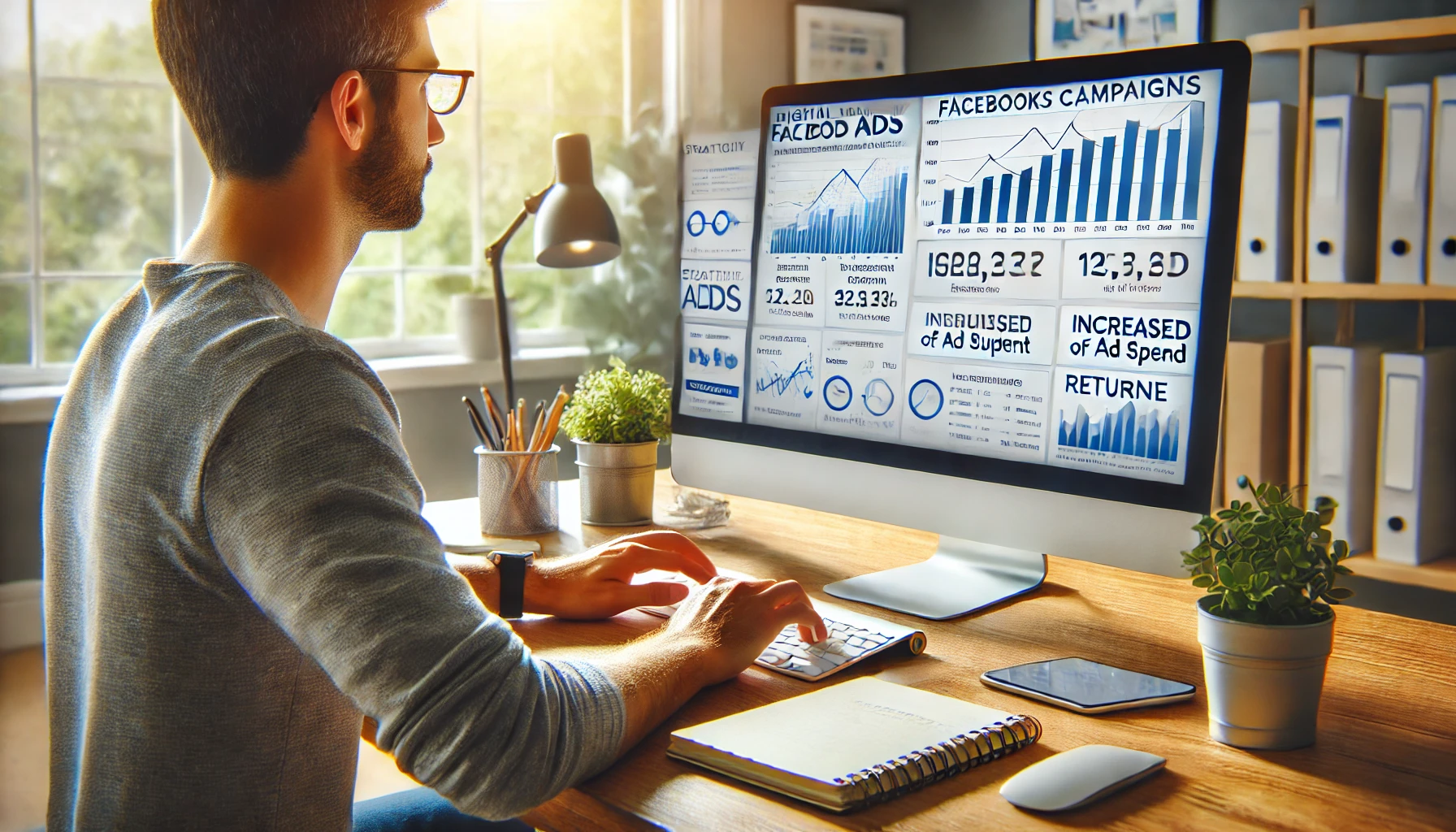Scaling Facebook Ads is a goal for many advertisers—but it’s also one of the most misunderstood stages of paid advertising. It’s easy to increase budgets, but maintaining profitability while doing so is where most campaigns fail. If you scale too fast or without the right systems in place, you risk ruining your cost-per-result and throwing off Facebook’s learning phase.
In this article, we’ll walk through proven strategies to scale Facebook Ads effectively without sacrificing your return on investment (ROI).
Understanding the Right Time to Scale
Before scaling any campaign, it’s essential to ensure that your current ads are performing consistently. Many advertisers make the mistake of scaling too early—when they haven’t yet found a winning ad set or proven funnel.
You’re ready to scale when:
- Your campaign has exited the learning phase.
- Your cost per result is stable or improving.
- Your KPIs (click-through rate, conversion rate, ROAS) meet your benchmarks.
- You’ve tested enough creatives and audiences to know what works.
Scaling should never be based on emotion or guesswork. It should be based on data and performance.
Horizontal vs. Vertical Scaling
There are two primary approaches to scaling Facebook Ads: vertical scaling and horizontal scaling. Each has its advantages, and often, the best results come from combining both methods.
Vertical Scaling
This involves increasing the budget of your existing ad sets or campaigns.
Pros:
- Simple to implement.
- Keeps performance history intact.
- Useful for time-sensitive promotions.
Cons:
- Can disrupt the learning phase if done too aggressively.
- May trigger higher CPMs if the audience is limited.
Best Practices:
- Increase budgets gradually—ideally by no more than 20-30% every 3–5 days.
- Monitor performance closely after each change.
- Avoid making edits that reset the learning phase (e.g., changing multiple settings at once).
Horizontal Scaling
This involves duplicating winning ad sets or creating new ones targeting different audiences or using different creatives.
Pros:
- Allows you to explore new segments of your market.
- Reduces risk by spreading spend across multiple ad sets.
- Helps identify new winning combinations of audiences and creatives.
Cons:
- Requires more testing and monitoring.
- Can lead to overlap if not managed carefully.
Best Practices:
- Duplicate top-performing ad sets and test with new lookalike or interest-based audiences.
- Test new creatives, ad formats, and placements.
- Use Facebook’s Audience Overlap tool to avoid targeting the same users with multiple ads.
Use Campaign Budget Optimization (CBO)
Campaign Budget Optimization lets Facebook automatically allocate your budget across multiple ad sets based on performance. When scaling, this can be a powerful tool—if used correctly.
Tips for using CBO when scaling:
- Group only high-performing ad sets together to ensure budget is spent efficiently.
- Monitor distribution to make sure the budget isn’t being wasted on low-performing sets.
- Use manual bidding in conjunction with CBO if you want tighter control over costs.
Test New Creatives at Scale
Scaling doesn’t just mean increasing budget. It also means expanding your creative strategy. Ad fatigue is real, and even top-performing ads will decline over time.
To scale creatively:
- Create variations of your winning ad (e.g., different headlines, visuals, formats).
- Use dynamic creative ads to let Facebook mix and match components automatically.
- Test new formats like Reels, Stories, and Carousels.
Pro tip: Incorporate user-generated content, testimonials, and product demos into your creatives for stronger social proof.
Expand Into New Markets or Audiences
When your current audience is saturated or you’re seeing higher costs, it’s time to test new markets.
How to do this:
- Build Lookalike Audiences from your best customers (1%, 2%, and 5%).
- Test new geographic regions if your product or service can ship or serve internationally.
- Explore untapped interests or demographics using Audience Insights or Meta’s suggestions.
Scaling to new audiences requires a fresh approach, so ensure that your creatives speak directly to each new segment.
Use Automated Rules to Protect Profitability
Automated rules allow you to control your campaigns even when you’re not actively managing them. This is especially important when scaling, as spend can increase quickly.
Examples of useful rules:
- Pause ad sets if cost-per-purchase exceeds a certain threshold.
- Increase budget only if ROAS is consistently above your target.
- Turn off low-performing ads after spending a set amount without conversions.
These rules ensure you maintain control and reduce the risk of wasting budget.
Monitor Metrics That Matter
When scaling, it’s easy to focus only on results like conversions or purchases. But other key metrics can warn you of issues before they impact your ROI.
Keep a close eye on:
- CTR (Click-Through Rate): Low CTR means your ad isn’t engaging.
- CPC (Cost Per Click): A rising CPC may suggest ad fatigue or poor targeting.
- CPM (Cost Per 1,000 Impressions): Higher CPMs can eat into your profit margins.
- ROAS (Return on Ad Spend): This is your ultimate profitability metric.
Create a dashboard or use Facebook’s breakdowns to monitor performance across age, gender, device, and placement.
Scale Slowly and Strategically
The most successful scaling strategies are gradual and based on solid performance. Don’t be tempted to double your ad spend overnight—it will often lead to erratic results and unpredictable costs.
Strategic scaling tips:
- Set clear budget increases in advance (e.g., 20% every 4 days).
- Always test before you scale.
- Have new creatives and audiences ready to avoid fatigue.
- Maintain daily performance checks during growth periods.
Final Thoughts: Smart Scaling Wins
Scaling Facebook Ads profitably is an art and a science. It requires patience, a deep understanding of your data, and a willingness to test continuously. By using both horizontal and vertical scaling strategies, automating wisely, and constantly refreshing your creative approach, you can grow your campaigns without sacrificing profitability.
If done right, scaling Facebook Ads can transform your business into a high-performing, revenue-generating machine.
Quando quiser, posso gerar a imagem relacionada a este artigo!
